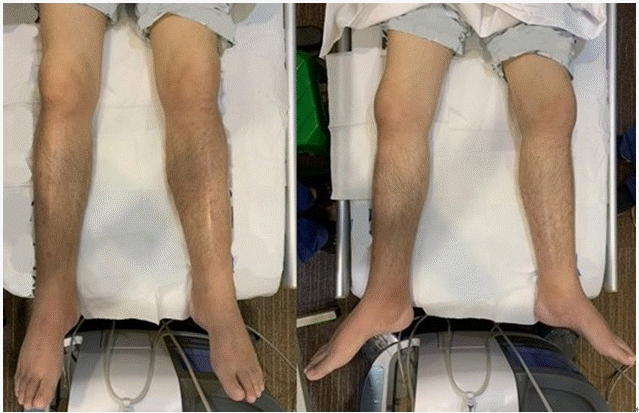1. Pineda C, Martínez-Lavín M. Hypertrophic osteoarthropathy: what a rheumatologist should know about this uncommon condition. Rheum Dis Clin North Am. 2013; 39:383–400.
2. Diren HB, Kutluk MT, Karabent A, Göçmen A, Adalioğlu G, Kenanoğlu A. Primary hypertrophic osteoarthropathy. Pediatr Radiol. 1986; 16:231–4.
3. Yap FY, Skalski MR, Patel DB, Schein AJ, White EA, Tomasian A, et al. Hypertrophic osteoarthropathy: clinical and imaging features. Radiographics. 2017; 37:157–95.
4. Meyer HJ, Leifels L, Bach AG, Surov A. Secondary hypertrophic osteoarthropathy caused by non-pleural or pulmonary tumors. Medicine (Baltimore). 2017; 96:e7985.
5. Izumi M, Takayama K, Yabuuchi H, Abe K, Nakanishi Y. Incidence of hypertrophic pulmonary osteoarthropathy associated with primary lung cancer. Respirology. 2010; 15:809–12.
6. Treasure T. Hypertrophic pulmonary osteoarthropathy and the vagus nerve: an historical note. J R Soc Med. 2006; 99:388–90.
7. Yao Q, Altman RD, Brahn E. Periostitis and hypertrophic pulmonary osteoarthropathy: report of 2 cases and review of the literature. Semin Arthritis Rheum. 2009; 38:458–66.
8. Yuan L, Chen L, Liao RX, Lin YY, Jiang Y, Wang O, et al. A common mutation and a novel mutation in the HPGD gene in nine patients with primary hypertrophic osteoarthropathy. Calcif Tissue Int. 2015; 97:336–42.
9. Ahrenstorf G, Rihl M, Pichlmaier MA, Rosenthal H, Witte T, Schmidt RE. Unilateral hypertrophic osteoarthropathy in a patient with a vascular graft infection. J Clin Rheumatol. 2012; 18:307–9.
10. Capelastegui A, Astigarraga E, García-Iturraspe C. MR findings in pulmonary hypertrophic osteoarthropathy. Clin Radiol. 2000; 55:72–5.
11. Rutherford GC, Dineen RA, O'Connor A. Imaging in the investigation of paraneoplastic syndromes. Clin Radiol. 2007; 62:1021–35.
12. Santhosh S, Bhattacharya A, Bhadada S, Kaur R, Singh M, Mittal BR. Three-phase skeletal scintigraphy in pachydermoperiostosis. Clin Nucl Med. 2011; 36:e199. –201.
13. Shih WJ. Pulmonary hypertrophic osteoarthropathy and its resolution. Semin Nucl Med. 2004; 34:159–63.
14. Nguyen S, Hojjati M. Review of current therapies for secondary hypertrophic pulmonary osteoarthropathy. Clin Rheumatol. 2011; 30:7–13.
15. Ooi A, Saad RA, Moorjani N, Amer KM. Effective symptomatic relief of hypertrophic pulmonary osteoarthropathy by video-assisted thoracic surgery truncal vagotomy. Ann Thorac Surg. 2007; 83:684–5.

